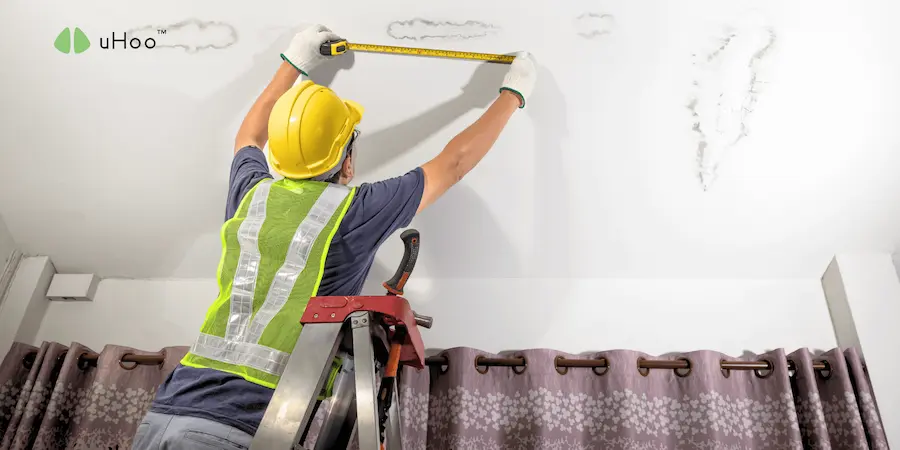While we might focus on air conditioning for comfort or air purifiers for dust, one of the most critical, yet often overlooked, aspects of indoor air quality (IAQ) is surprisingly fundamental: effective leak prevention and the prompt repair of any moisture intrusion. This isn’t just about avoiding visible water damage; it’s about building your IAQ’s strongest defense.
Why Leak Prevention is Your First Line of Defense for Clean Air
Consider the enemies of good IAQ that thrive on moisture:
- Mold and Mildew: These are the most aggressive culprits. Mold spores are microscopic and ever-present, but they need water to grow. A tiny, consistent leak provides the ideal habitat, allowing mold to colonize within 24-48 hours. As mold grows, it releases spores and mycotoxins into the air, leading to allergic reactions, asthma attacks, respiratory infections, and persistent musty odors. Effective leak prevention starves mold of its lifeblood. Check out the uHoo Mold Index for more details.
- Bacteria and Other Microorganisms: Stagnant water from leaks, especially in warm climates like ours, can become a breeding ground for various bacteria. These can become airborne and contribute to respiratory issues.
- Dust Mite Proliferation: Elevated humidity from leaks creates an ideal environment for dust mites, potent allergens that thrive in damp conditions, worsening allergy symptoms.
- Chemical Off-gassing: When building materials get saturated and begin to decompose, they can release harmful Volatile Organic Compounds (VOCs) into the air, adding to your home’s toxic burden.
Investing in leak prevention means taking proactive steps to stop moisture intrusion before it starts. This includes:
- Regular Plumbing Inspections: Check pipes under sinks, behind toilets, and around appliances (washing machines, dishwashers, water heaters) for drips, corrosion, or dampness.
- Roof and Gutter Maintenance: Clear gutters regularly to prevent overflows, inspect roof tiles/shingles for damage, and check flashing around chimneys and vents.
- Window and Door Sealing: Ensure caulking and weatherstripping are intact around all openings to prevent rainwater intrusion.
- Proper Drainage: Ensure landscaping slopes away from your foundation and that downspouts direct water far from the house.
- Addressing Condensation: Improve ventilation in high-moisture areas like bathrooms and kitchens to prevent condensation buildup that can lead to hidden mold.
The Power of Prompt Repair
Even with the best leak prevention strategies, leaks can still happen. This is where “prompt repair” becomes equally critical. The moment you detect a leak, no matter how small, immediate action is paramount. Delaying repairs by even a few days can allow mold to firmly establish itself, turning a minor fix into a costly and extensive mold remediation project.
By making leak prevention and prompt repair a cornerstone of your home maintenance, you’re not just protecting your property from visible damage; you’re actively safeguarding your indoor air quality. You’re denying mold, bacteria, and allergens the moisture they need to thrive, ensuring your home remains a genuinely healthy haven for your family.
To constantly monitor for the subtle signs of moisture intrusion and ensure your leak prevention efforts are paying off, a uHoo air quality monitor can be invaluable. By tracking real-time humidity and VOC levels, it can alert you to hidden dampness or potential mold growth, empowering you to address issues long before they become major problems.

